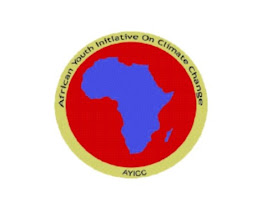FROM MDGS TO SDGS, THE GHOST OF FOOD SECURITY AND IT’S THREAT ON NATIONAL SECURITY
It was the first time we got it right,
at least that is what we thought seventeen years ago when the world came up
with a road map to Sustainable Development. The Millennium Development Goals
(MDGs) were received with mixed reactions depending on your understanding of
the process leading to the MDGs or how well you identified with the issues that
were to be addressed by the blue print. MDGs were not a dress-rehearsal to
another blueprint but the actual play in the theatre whose main objective was
to bring the global population above the poverty line. Outlined in eight
different goals with specific target, the world was set towards the achievement
of economic, social, environmental and political sustainability.
If I am to borrow from one of the
Sermons by Bishop TD. Jakes, “Nothing Just Happens,” it did not just occur that
the eradication of extreme poverty and hunger was identified as the first goal.
Though without any knowledge of what informed the drafters, whether the numbers
of every MDG were a mere coincidence or there was a direct correlation with the
level of priority, I request to be allowed to subscribe to the latter. A
position that is reiterated by the SDGs which still give priority to hunger and
food security in SDGs one and two. Poverty in the developing world has been the
major hurdle to economic growth resulting in overreliance on AID from the
developed countries. Compounded by the variability of the Climate variability
which scientists associate with the effects of Climate Change, the hunger
situation is worsening. Statisticians indicate that Africa, which is majorly a
developing continent, has one of the fastest growing populations. Logic has it
that population will still need social amenities and land to survive, a
situation that explicitly explains the continuous subdivision of arable land
for settlement. The available land for families is not enough to produce enough
food for family consumption with pastoralist also being pushed to the
periphery.
Multinational Companies manufacturing
seeds and fertilizers have also exploited the farmers by focusing more on the
Supply and demand as opposed to the efficiency of recommended technologies in
conventional agriculture. As opposed to the indigenous seeds, modified seeds
cannot be replanted and only survives under special environmental and soil
conditions therefore ensuring the cost of production remains high. Frequent and
harsh droughts have plagued the continent of Africa due to the dire impacts of
Climate Change, at least according to the scientists. Pastoralists have been
forced in Kenya, for, example to walk long distances in search of pasture and
water, killing anyone who comes in their way. In Kenya alone, many people in
the Arid and Semi-Arid Lands have lost their lives and livestock in the past
five months alone due banditry by herders looking for pasture. This is higher
than any other manmade causes including terrorism over the same period.
So then, what happened to the MDGs? The
progress report on the Millennium Development Report in Kenya, published in the
year 2016 outlines a number of achievements on the targets which were set for
the first MDGs. The report says, “the proportion of people living below the national
poverty line in Kenya has been declining albeit at a slow rate since the year
2000 when it stood at 52% to about 46% in 2014.” The report notes that, the
slow decline in poverty levels, among other factors, can be attributed to the
global impacts of Climate Change fueled by the global warming which has led to
the frequent episodes of severe drought.
Despite the challenges, the report has recorded significant achievements
in realizing the targets.
So, will the SGDs succeed where the MDGs
failed? There is an African proverb that says, “a man who hangs around a
beautiful girl without saying a word ends up fetching water for guests at her
wedding.” It is an uphill task to claim with certainty that the SDGs will be a
smooth sail in their implementation. The sustainable development agenda has
been built on the failures of MDGs, with the new goals, a breakdown of the MDGs
with focused targets. The momentum is very high with trainings and awareness
projected to take a shorter time if the current trends provides a basis for reference.
Though an opt-pessimist, realization of the new seventeen SDGs solely depends
on how well we embrace the challenges faced with the MDGs and address them in
the implementation of the SDGs. The world has presented us with a beautiful
girl, more beautiful compared to the MDGs which resulted in a bangled
engagement, at least to the extent that we did not achieve all the set targets.
Kenya must choose its path, either to be the groom or fetch water when the day
of the wedding comes in the year 2030.
It is therefore my take that, the
National security in the developing world with Kenya as a case study is and
will be heavily impacted by failure to address food insecurity concerns. Just
like we always say in Africa, “peace is costly, but it is worth the expense.”
We must therefore formulate institutional frameworks; encourage collaborations
between governments and all other stakeholders; denounce the donor dependency
syndrome by pursuing domestic alternative and innovative financing mechanisms;
and encourage involvement of universities and other research institutions. It
is only by this approach that we will stand tall and enumerate our achievements
when we get to the year 2030. None of us is as smart as all of us, we must work
together to achieve more.
Fredrick
Ouma / fredrickmbima@gmail.com

Comments
Post a Comment